Idea by
Robert van der Pol & Erica Chladová
LMNL
Call for ideas 2016
The Landscapes of Buildings
The Landscapes of Buildings
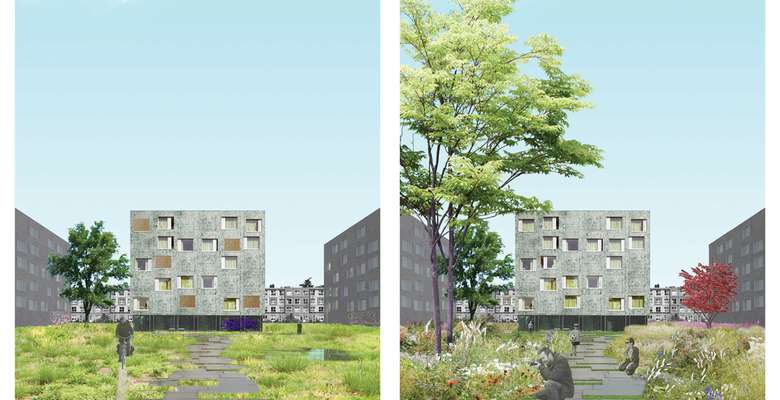
Many architects lose control of the spaces surrounding their designs. This may be due to bad planning, divisions between public/private investments, lack of knowledge, or value engineering, but it can often lead to a downward spiral of neglect that eventually undermines the value of the structure.
Even well designed buildings placed in subpar surroundings stand less of a chance of retaining value and being appreciated by occupants - leading to blight and demolition.
When an architect delivers a building it is at its best on day one. When a landscape is designed it takes time for it to mature. This discrepancy in timelines can only be equalized with proper investment in maintenance. Buildings must surpass the average 40 year lifespan and landscapes must be cared for so as to reach their full potential.
Buildings and landscapes have a reciprocal value for owners and occupants and enhance the quality of life of the future city. They must always be at their best.

Life of a building in dull surroundings
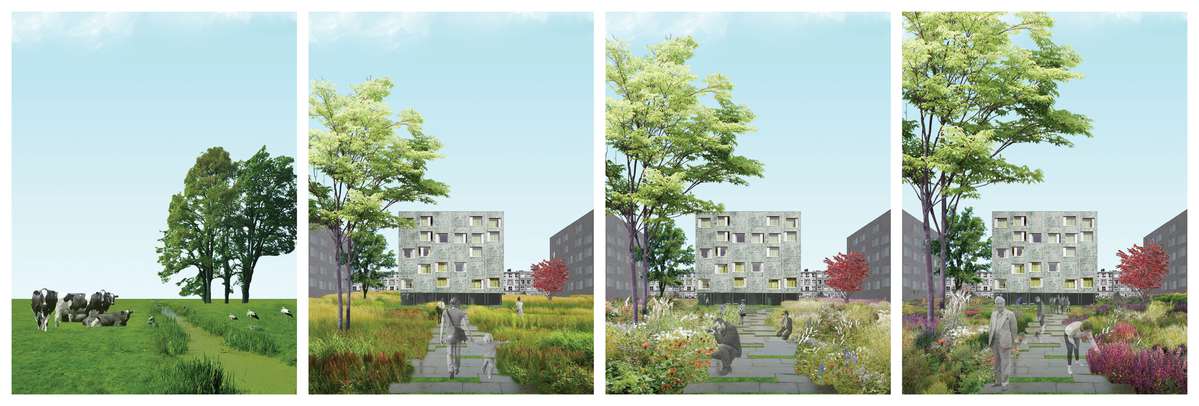
Life of a building in a vibrant landscape
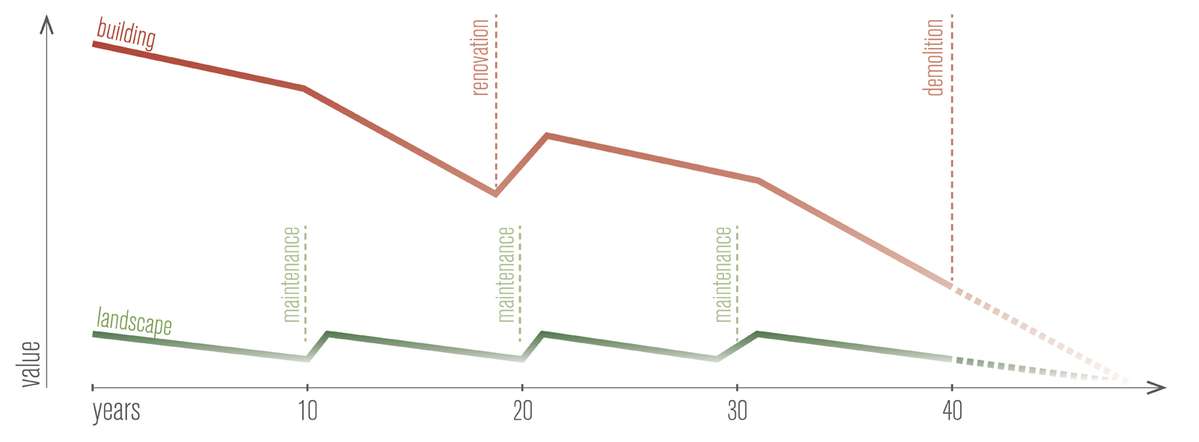
Graph showing the change in value of a building in a subpar landscape
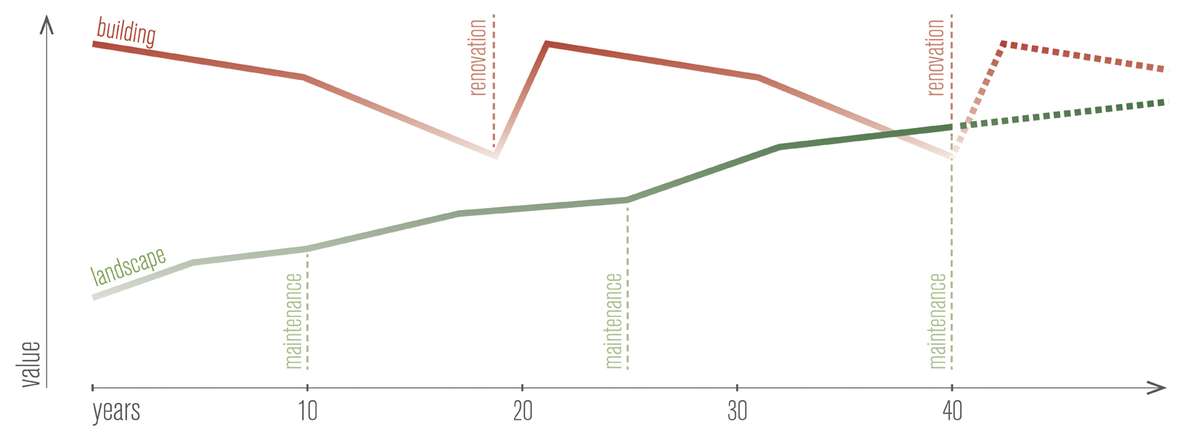
Graph showing the change in value of a building in a dynamic landscape
The Landscapes of Buildings
The Landscapes of Buildings

Many architects lose control of the spaces surrounding their designs. This may be due to bad planning, divisions between public/private investments, lack of knowledge, or value engineering, but it can often lead to a downward spiral of neglect that eventually undermines the value of the structure.
Even well designed buildings placed in subpar surroundings stand less of a chance of retaining value and being appreciated by occupants - leading to blight and demolition.
When an architect delivers a building it is at its best on day one. When a landscape is designed it takes time for it to mature. This discrepancy in timelines can only be equalized with proper investment in maintenance. Buildings must surpass the average 40 year lifespan and landscapes must be cared for so as to reach their full potential.
Buildings and landscapes have a reciprocal value for owners and occupants and enhance the quality of life of the future city. They must always be at their best.
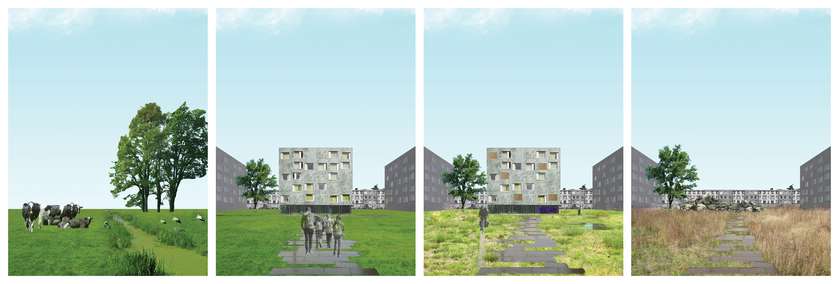
Life of a building in dull surroundings
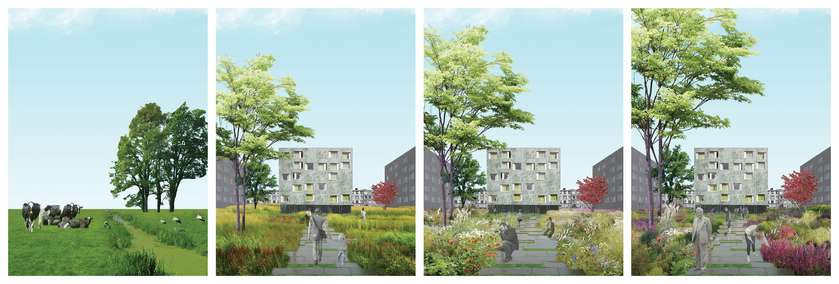
Life of a building in a vibrant landscape
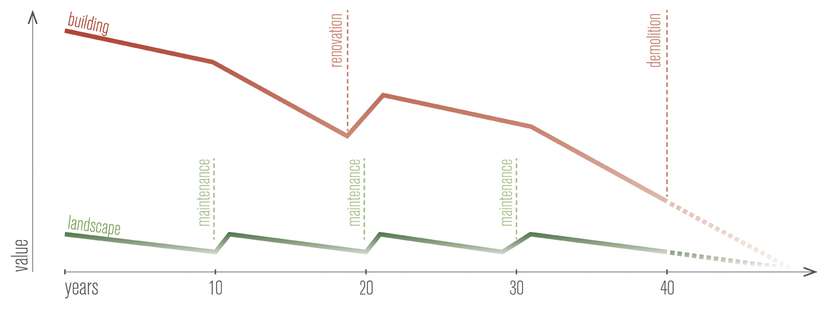
Graph showing the change in value of a building in a subpar landscape
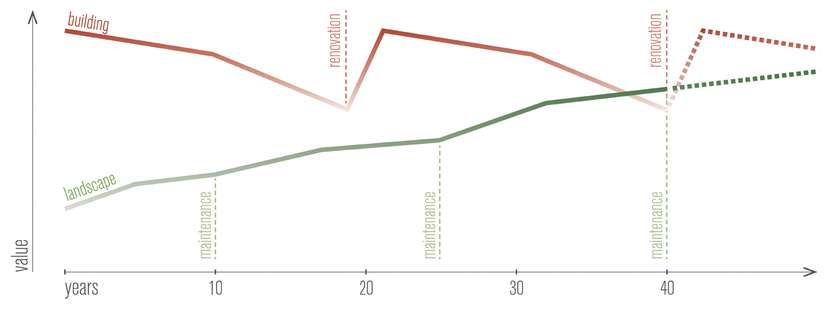
Graph showing the change in value of a building in a dynamic landscape